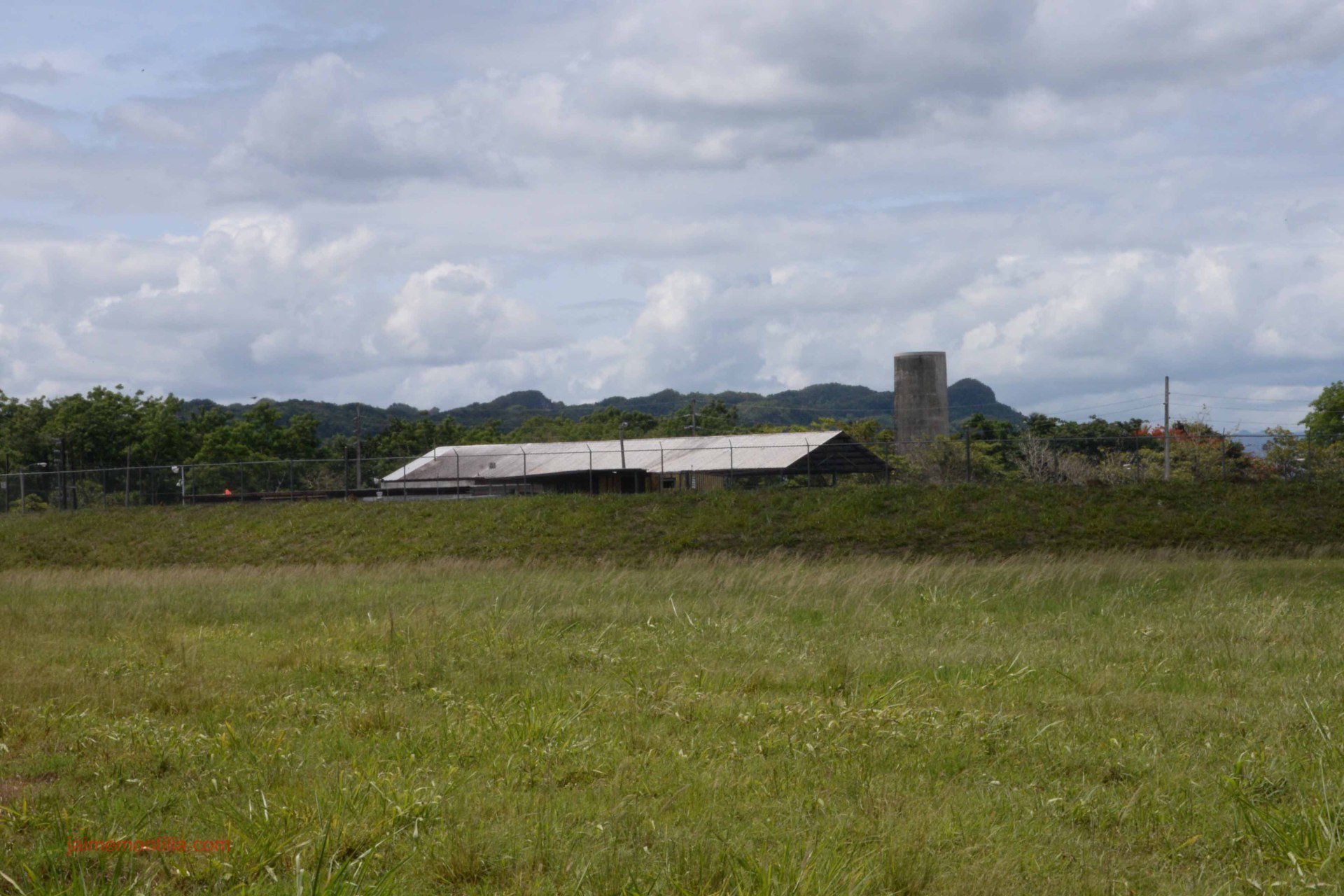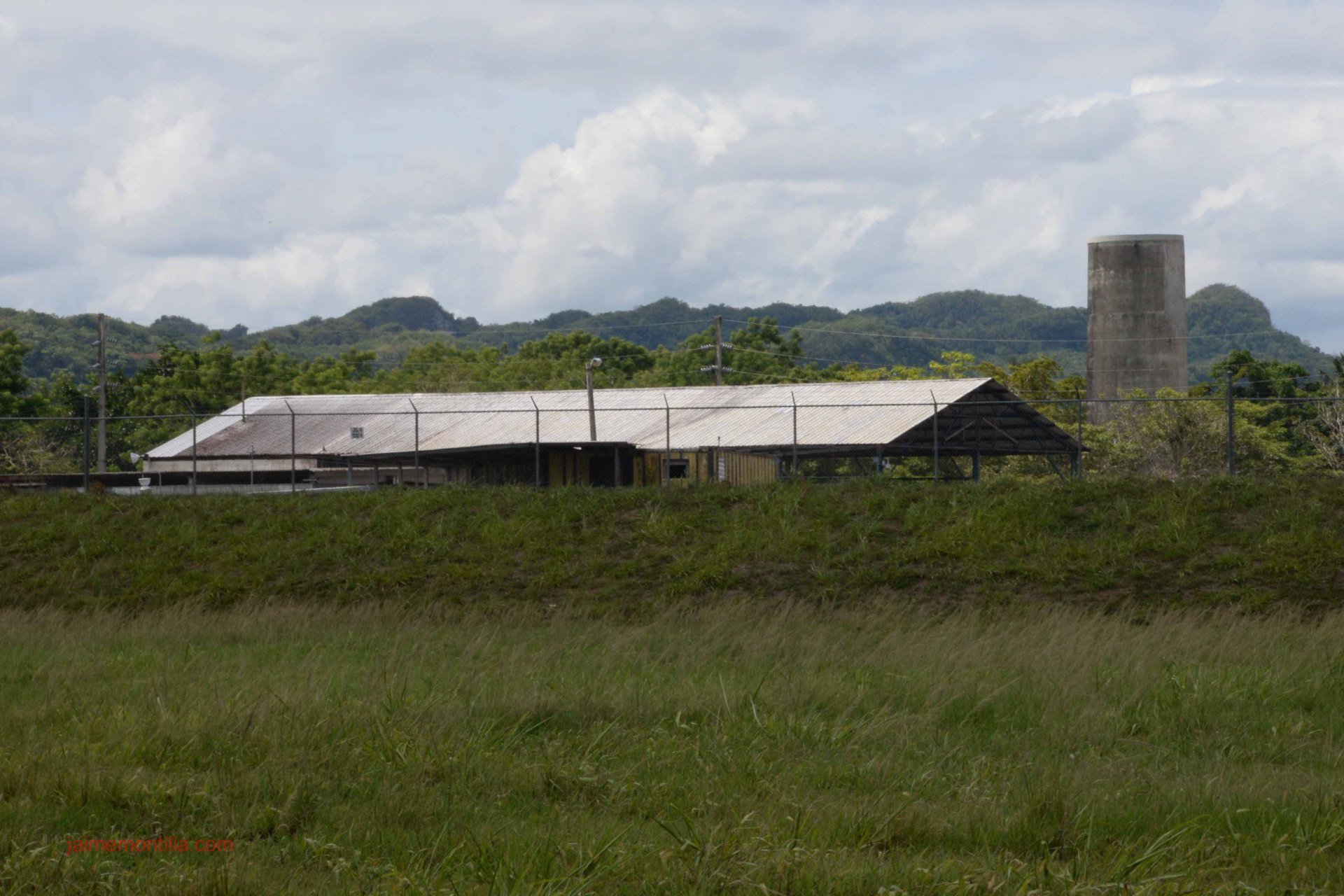
Central Monserrate
Location: Manatí
Date Established: 1894
Date Ceased Operations: 1972
Annual Production Graph
Average Annual Production: 17,046 Tons
Best Production Year: 1942/41,120 Tons
Family Ownership: Calaf
Jaime Calaf Serra (1813- ) and Salvador Calaf Serra (1817-1903) were Spanish immigrants from Villanueva & Geltrú, Catalonia who arrived in Puerto Rico in 1833 to take over the mercantile firm of their great-uncle Francisco Serra Guma who had died in 1831 and left the business to their mother Rita Serra. Francisco's business was a mercantile firm at Calle Fortaleza in San Juan dedicated to crop financing, the purchase and sale of cattle, slaves, agricultural products and machinery & equipment which the two brothers renamed Calaf Hnos.
In 1841 Salvador relocated to Manati to open a branch and expand the business of Calaf Hnos. He soon ventured on his own into other businesses which included brick and clay tile manufacturing and a bakery. His first land acquisition was from Ana Sanchez in 1845 when he purchased the fifty acre Hacienda Francés which included an oxen driven "trapiche". Additional adjacent lands were soon acquired and added to Hacienda Francés. One of these was the 172 acre Hacienda Carmen which had a steam powered mill and sugar factory, acquired in lieu of payment of crop financing debts.
Other land acquired for unpaid crop financing debts were Hacienda Rincón from José Maria Vega and Hacienda Rincón Grande from the estate of Pedro Valdés. However, the most important land acquisition was in 1857 when he acquired the thirty five acre Hacienda El Tamarindo from Petrona Vega Gonzalez (1822-1899).
Petrona Vega Gonzalez was the daughter of Bernarda Gonzalez ( -1854) and Jose Maria Vega ( -1855). In 1816 Bernarda and her parents arrived from Venezuela by virtue of the Royal Decree of Graces of 1815 and shortly thereafter acquired the 35 acre Hacienda El Tamarindo. Salvador was personal friend of José Maria and used to visit at the Hacienda Tamarindo where he resided with Bernarda since their marriage in 1820. Previous to her marriage with josé Maria, in 1818 Bernarda had a daughter of unknown father named Antonia Gonzalez who later married Francisco Casellas.
Salvador Calaf Serra had a consensual relationship with a woman named Joaquina Rivera who died giving birth to their son Federico Calaf Rivera (1845-1924). Federico was then taken care of by Antonia and her husband who were the child's Godparents and lived with her mother Bernarda at Hacienda Tamarindo. In 1848 Antonia and Francisco had their own child so care of Federico was assumed by Petrona who was then 26 years old with whom Salvador already had a consensual relationship that culminated with their marriage in 1874. In 1890, Petrona became the legal mother of Federico when he was legally adopted by her.
The relationship between Bernarda, Jose Maria, Antonia, Petrona, Salvador Calaf Serra and Federico Calaf Rivera is very important in the history of Central Monserrate. When Bernarda died in 1855 victim of the cholera epidemic that affected Puerto Rico in 1855-1856, her assets which included cash, agricultural lands and a house in the town of Manatí were inherited by her two daughters Antonia and Petrona. By means of agreements between them, Antonia retained the house in Manatí and Petrona eight acres of agricultural lands, all other agricultural lands it was agreed were to be retained by the widower Jose Maria Vega. As a result, adjacent lands owned by José Maria individually were added to Haciendas Tamarindo.
José Maria died a year after Bernarda also victim of the cholera epidemic. Since Antonia was not the daughter of José Maria, when he died Petrona was his sole heir thus leaving Antonia without her participation in the assets left her by her mother. Also included in José Maria's Last Will and Testament were in excess of 46 acres of agricultural lands not his own which his brother Miguel ( -1851) had left him to administer for the benefit of his 9 surviving children, thus depriving all 9 children of any claim to their rightfull inheritance.
In 1857 all lands inherited by Petrona, some in rather dubious ways as stated above, were sold to and became part of Salvador Calaf Serra's wealth. In 1863 Salvador consolidated all the farms into one he named Hacienda Monserrate. In 1863 he sold Hacienda Monserrate to José Lucas Aranzamendi Elzaburu (ca.1798-1868). On January 16,1869 Salvador Calaf Serra re-acquired the then 347 acre Hacienda Monserrate at public auction for 85,000 pesos.
During the time Monserrate was in the hands of Aranzamendi, Salvador continued to acquire lands including a hacienda called Victoria. Once Monserrate was re-acquired, even more lands were acquired that adjoined haciendas Monserrate and Victoria. After all was said and done, Hacienda Monserrate consisted of 1,845 acres product of the consolidation of a dozen or so haciendas and several farms.
In 1873 a steam powered mill was installed at hacienda Monserrate. Starting with the 1883 season, the Hacienda was run by Salvador's son Federico and in 1887 he leased it from his father. It was during Federico's tenure that Monserrate was modernized with machinery acquired from the London firm P. Isaacson and started distilling rum. Hacienda Monserrate finally became a Central sugar factory in 1894 with machinery acquired from Cail & Co. of Paris. It was later run by Federico sons Jaime (1880- ) and Federico (1891- ) Calaf Collazo until its closure.
During the early 1900s land under contract to grow sugarcane increased considerably. In 1916, the heirs of Wenceslao Borda Rueda entered into a 12 year lease with jaime Calaf Collazo for the lands of Hacienda Esperanza for $37,000 annually. The lease was assigned to a new partnership created between Jaime Calaf Collazo and Wenceslao Borda Klugkist Part of the agreement though, was that sugarcane grown at Hacienda Esperanza was to be processed at Central Plazuela. Wenceslao Borda Klugkist died in 1924 but the partnership continued until its maturity in 1928. After the partnership was dissolved, Jaime Calaf Collazo, again leased the lands until 1938.
In 1922, Federico Calaf Rivera represented by his son Jaime Calaf Collazo entered into a lease agreement with the estate of Francisco Brunet Guaytá for some 1,400 acres of land planted with sugarcane and the sugar factory previously known as Central La Luisa. The lease called for payments of $30,000 annually for six years of which about 10% was paid to Rita Calaf Collazo, the widow of Francisco Brunet Guaytá.
Several governmental measures including but not limited to the decision in 1940 to enforce the 500 acre limit on land ownership by corporations which resulted in the government ownership of vasts amount of agricultural lands, the creation of the Land Authority in 1941 passed to protect small farmers and laborers, the decision in 1942 to place sugar companies under the control of the Public Service Commission which implemented costly regulations and established tariffs among other things, made it practically impossible for sugar companies to operate at a profit. As was the case with the Puerto Rican sugar industry in general, during the late 1960s and early 1970s operational losses at Central Monserrate reached unsustainable levels.
After the 1971 grinding season, management at Central Monserrate made the decision to shut down operations indefinitely. Between July 1971 and September 1972 management began dismantling the sugar factory and started selling land, machinery and equipment which proceeds were used to pay debt. Responsible for the liquidation of the business were Jaime Calaf Collazo sons Federico Angel and Antonio Federico Calaf Collazo, the fourth Calaf generation who had run the business since 1947. After 111 year in operation Central Monserrate was no more. On the lands they were able to keep, Federico Angel and Antonio Federico took to cattle ranching.
Monserrate is approximately 3¼ miles from Central Plazuela and shares the same valley pictured in the Central Los Caños page. Its remains are now in a fenced in location within the facilities used by Safety-Kleen, an industrial waste management firm. Access to the immediacies of the ruins was not available so pictures had to be taken from a distance. The only remaining structure of the sugar mill is the chimney of which only a few feet remain, it had to be cut due to its bad state and the risk of crumbling down. The old Calaf family residence and sugar mill office nearby is still standing but abandoned and deteriorated was not photographed. Efforts to gain access to it have not been successful to date but as soon as it is possible, pictures of same will be included herein.

